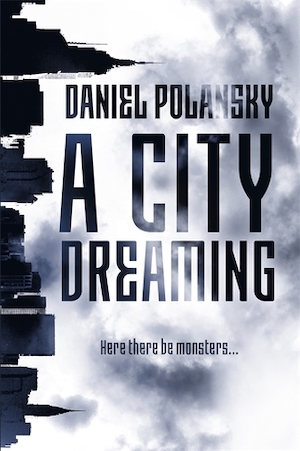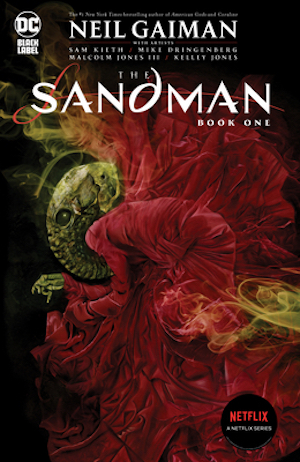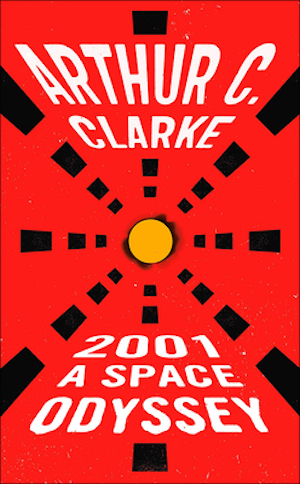Places have power. In science fiction and fantasy, they have actual, magical power more often than not.
SFF settings are often big by necessity. Locales need to hold entire casts of characters, sweeping civilizations, the flora and fauna flourishing in myriad biomes. Most settings function as they’re meant to, but meaning depends on the author’s intent and the reader’s interpretation. I find most settings nestle into the Goldilocks zone, a happy middle-ground where they can flesh out the larger world and offer a stage upon which the characters can fuel the plot.
It’s great fun, then, when an author considers setting from a different angle. Sometimes a place can loom over the characters, striking fear into any who tread upon it. Locations can feel like they’re living through stories of their own while the characters within them play out their small, individual tales. In stories like these, places become characters in their own right.
Here, I offer five of my favorite settings that transcend convention and feel like distinct actors in the stories taking place within them.
The Overlook Hotel, The Shining

All work and no play—wait a minute. Scratch that… I’m sticking to Stephen King’s novel here, though Kubrick’s movie could fit the bill, too.
The Overlook Hotel reaches its haunting tendrils into the minds of its victims—er, I mean residents—over the course of a brutal winter. Jack Torrance and his family encounter avatars of the Overlook throughout, giving us a glimpse into the place’s nefarious power as its hold on Jack grows increasingly threatening.
Viewing the Overlook’s constructs as extensions of the setting’s character and motivations proves for interesting reading. My personal favorite is the gregarious but always off-putting Lloyd, who tends bar in the glamorous Overlook ballroom. Behind Lloyd’s eyes lies a disturbing undercurrent of tension, a thirst to overtake the weaker Jack Torrance and use him as a tool to acquire young Danny’s power.
King doesn’t bother to explore what the Overlook actually is or attempt to explain it away, and the book is better for it. He simply treats readers to a singularly sinister, cutthroat setting hell-bent on absorbing as much power as possible. It’s a driving force in the novel, and its power lurks around every corner.
Arrakis, Dune

True fans call it Sandyland. What’s that? Just me? Okay… either way, Arrakis is a character in and of itself. Dune’s characters must stay hyper-vigilant while they navigate the planet’s forbidding landscape, lest the sandworms gobble them up.
Side note, has anyone ever researched the caloric intake of an Arrakis sandworm? Like, how much benefit would they actually get from devouring a diminutive human? I suppose it’s more about self-defense or perhaps even just pure aggression, but that’s always been a sticking point for me.
Arrakis functions as a home for the Atreides family, a backdrop for the galaxy’s political turmoil, and as a planet-sized ruthless antagonist that doesn’t care about either of those things. Arrakis is home to melange—the material that has made interstellar flight possible for humanity. But it’s a hostile, unforgiving place. It may not be sentient, but its natural phenomena, climate, and landscapes make it seem as if it’s unwilling to part with the valuable resource.
New York City, A City Dreaming

I’m a Chicago native, which means I’m an apologist for The Windy City. It’s just the best. But when it comes to NYC, I’ve gotta admit it’s a hell of a town—especially when it comes to its place in SFF.
New York plays a starring role in any number of sci-fi and fantasy tales. It’s the subject of magical realism, post-apocalyptic stories, and future-earth epics. But Daniel Polansky’s A City Dreaming tops my personal list; it’s a novel that deserves to reach a far wider audience. It features the magician/wizard M, who gallivants through a New York far more magical than the one we know and love. The book reads like a collection of interconnected shorts, each giving us (and M) an expanded view of this off-kilter New York City.
A City Dreaming’s NYC has a literal heart. It pulses with magic and mystery, doling out life-altering experiences to those powerful or willful enough to seek them out. In a way, the city functions like a chess board on which M is a powerful piece. Watching the moves play out as the novel unfolds offers a wholly unique view of NYC as a powerful influence in the lives of those who live there.
The Dreaming, The Sandman

Morpheus, the man on everyone’s mind! Of course the Dreaming makes its way onto this list, in partial thanks to the wonderful new Netflix adaptation.
Dream of the Endless shapes his own reality, sometimes with the help of powerful dreamers. The Dreaming becomes a collective project, the result of unknowing collaboration from billions of dreamers. Though Morpheus’ influence is the strongest shaper of the land, the Dreaming takes on a life of its own. It molds itself at the hands of Sandman’s expansive cast, often without the dreamers themselves understanding what’s happening.
The Dreaming is as much an extension of Dream as it is a character in and of itself, constantly being created and reshaped by the slumbering creators in the waking world.
Discovery One, 2001: A Space Odyssey

Does a spaceship controlled by a sentient AI count? There’s no panel of judges examining this list, so I’m going for it. HAL 9000, the Heuristically programmed Algorithmic computer, controls Discovery One’s functions behind the scenes. Its duties include managing the cryo-sleep of the crew members, keeping communications online, making minor course adjustments, and performing thousands of other mechanical or digital tasks.
HAL 9000’s personality is both a representation of Discovery One and a individual consciousness unto itself. David Bowman and Frank Poole communicate with HAL as though it is a human mind. They play chess against it (and lose). No setting on this list has more agency than HAL 9000, as Bowman and Poole soon learn. A ship can feel far more dangerous when a rogue AI starts making pivotal decisions without first consulting the crew.
I know HAL’s a stretch here, but it sets the stage for so many wonderful AI-gone-wrong tales in SFF. The atmospheric tension HAL instigates makes Discovery One a shoo-in for this list.
***
What are your favorite settings masquerading as characters? There are so many memorable places that serve as so much more than backdrops in our best-loved stories—if you have recommendations, let me know in the comments!
Cole Rush writes words. A lot of them. For the most part, you can find those words at The Quill To Live or on Twitter @ColeRush1. He voraciously reads epic fantasy and science-fiction, seeking out stories of gargantuan proportions and devouring them with a bookwormish fervor. His favorite books are: The Divine Cities Series by Robert Jackson Bennett, The Long Way To A Small, Angry Planet by Becky Chambers, and The House in the Cerulean Sea by TJ Klune.










